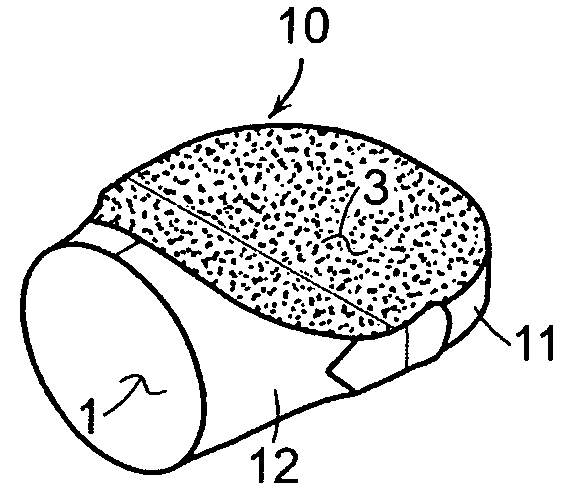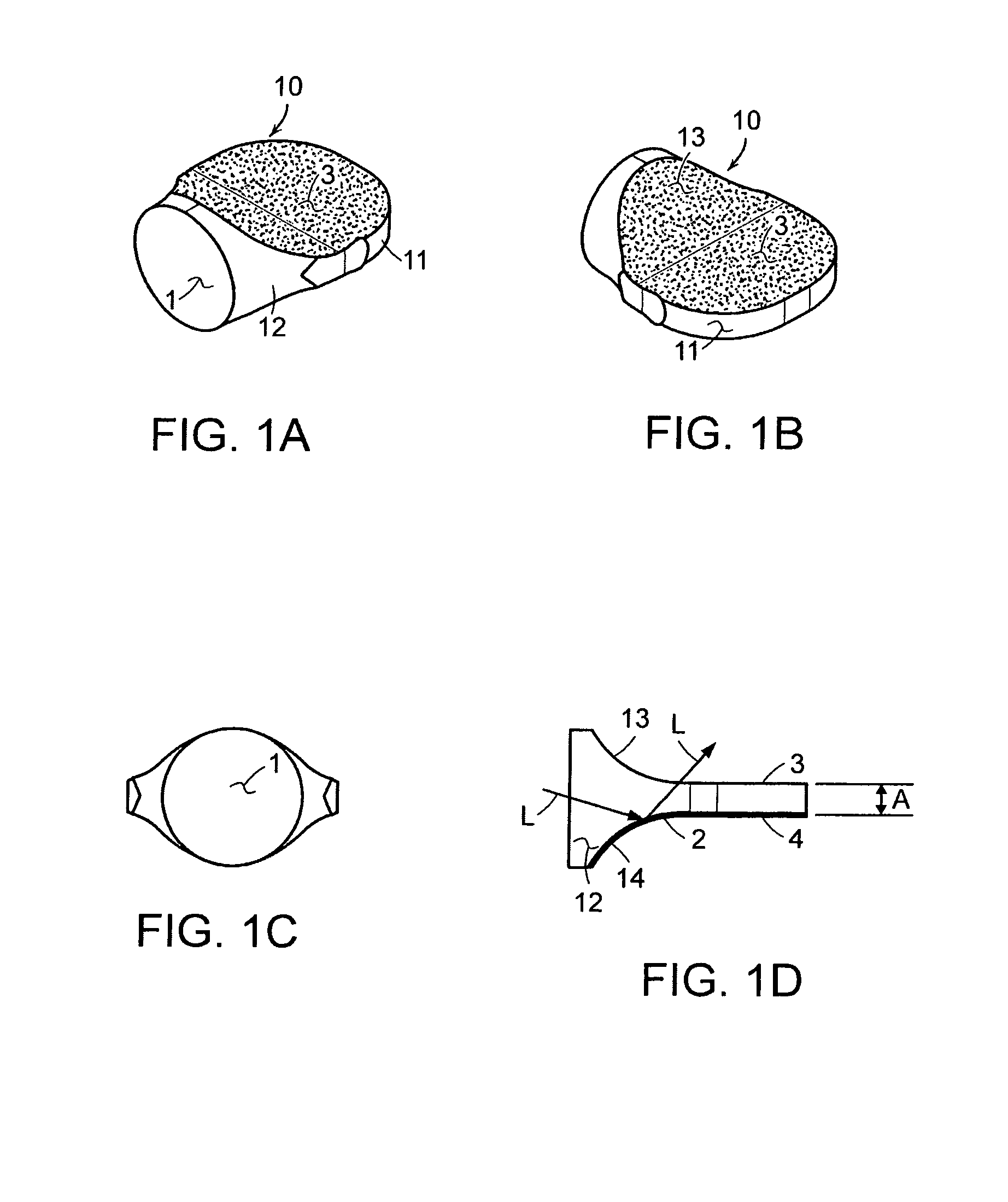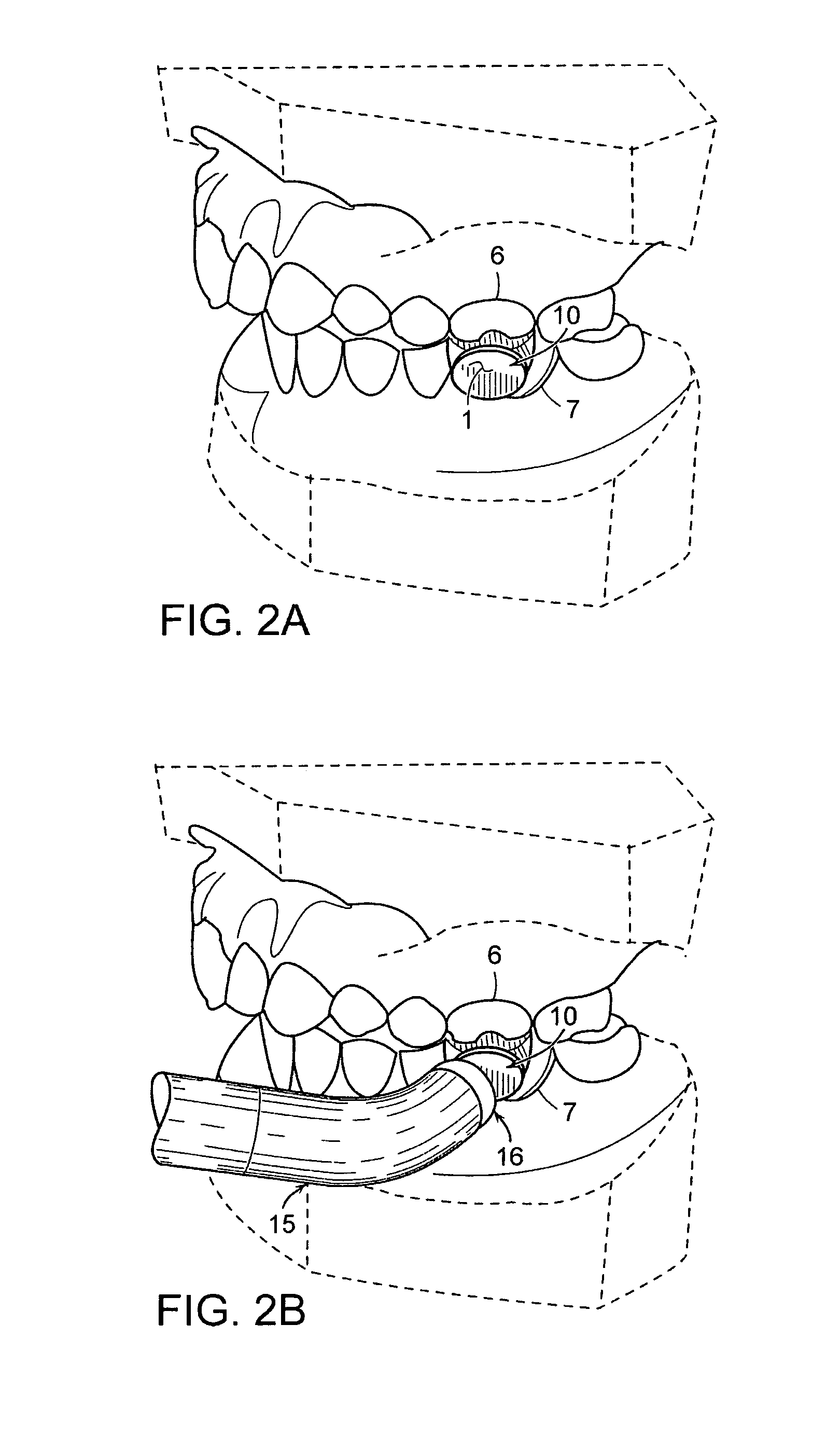Dental light curing member and method
a curing member and curing technology, applied in the field of dental devices and methods, can solve the problems of difficult to cause adequate external pressure to be applied, time-consuming, cumbersome and inconvenient, and micro leakage remains a major problem
- Summary
- Abstract
- Description
- Claims
- Application Information
AI Technical Summary
Benefits of technology
Problems solved by technology
Method used
Image
Examples
Embodiment Construction
[0014]The dental device of the present invention is an elastomeric member 10 having a transparent body as shown in FIGS. 1(a), 1(b), 1(c) and 1(d) and FIGS. 2(a) and 2(b) as well as in FIGS. 3 and 4 identified as 10′ and 10″ respectively. The elastomeric member 10 is transparent and intended for use as a flexible light guide to facilitate curing a photo curable resin composition during the clinical restoration of a tooth while simultaneously directing light into the elastomeric member 10 to polymerize the photo curable composition under pressure. The dental device may be formed of any elastomeric material including, for example, a silicone composition, a urethane composition or an elastomeric acrylic selected from a broad range of acrylics known as thermoplastic elastomers. The elastomeric member 10 should be soft having a preferred durometer of between Shore 00 #20 and 00 #60 and optimally having a durometer of Shore 00 #35 and 00 #45.
[0015]The elastomeric member 10 can be of any g...
PUM
 Login to View More
Login to View More Abstract
Description
Claims
Application Information
 Login to View More
Login to View More - R&D
- Intellectual Property
- Life Sciences
- Materials
- Tech Scout
- Unparalleled Data Quality
- Higher Quality Content
- 60% Fewer Hallucinations
Browse by: Latest US Patents, China's latest patents, Technical Efficacy Thesaurus, Application Domain, Technology Topic, Popular Technical Reports.
© 2025 PatSnap. All rights reserved.Legal|Privacy policy|Modern Slavery Act Transparency Statement|Sitemap|About US| Contact US: help@patsnap.com



